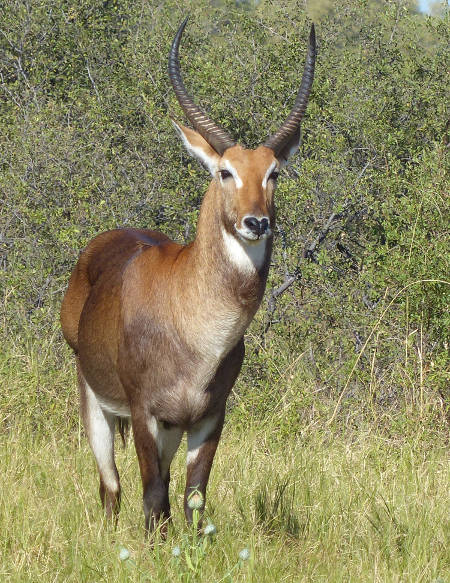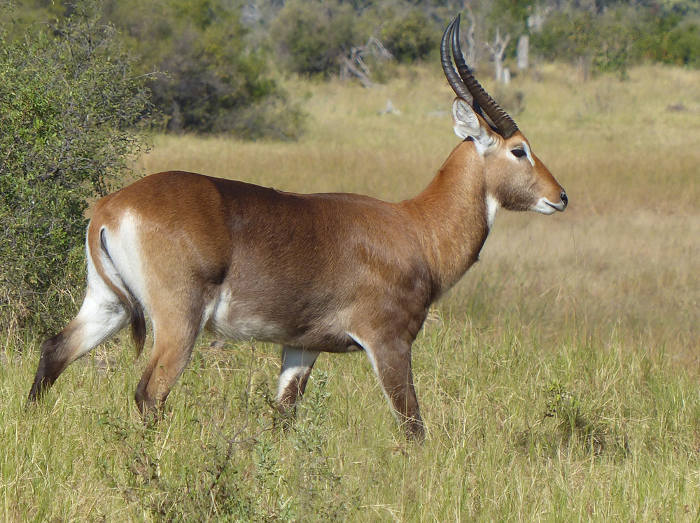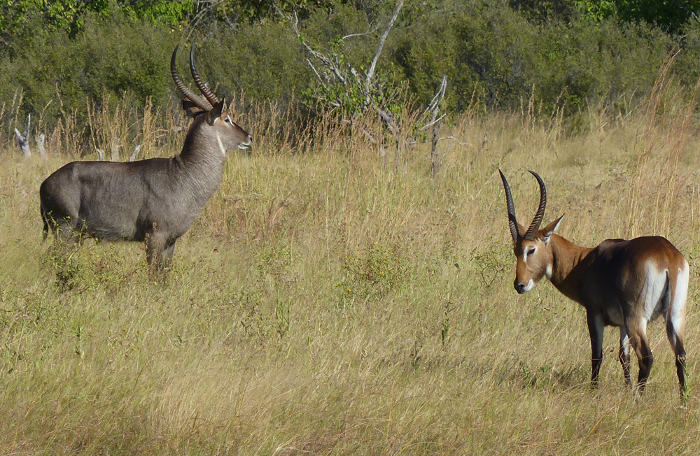‘Antelope hybrid!’ is hardly the usual cry during a game drive. And yet, on a recent safari, we got a little more than expected when it came to tallying up the number of species encountered – a strange-looking and beautiful cross between two antelope species. Written by: Grant Nel
Whilst trundling slowly along the Selinda Spillway in northern Botswana, soaking up a landscape that has benefitted from some excellent rains at the back end of the wet season, we bumped into a large antelope standing in the middle of the track. My first instinct was expressed as, “Wow, what a beautiful waterbuck,” but our guide had a little smirk on his face as this guide, with 30 years’ experience, started to flounder and mumble over his identification!
“It’s a hybrid,” he whispered to me.
“Huh? In the wild?” was my rather understated expression of astonishment.

What paraded in front of us in the golden sunshine of late afternoon was a mature bull hybrid between a waterbuck (Kobus ellipsiprymnus) and red lechwe (Kobus leche)! The sun glistened off a shiny coat that displayed just about every colour to be found on an African antelope – I have seldom seen such a handsome-looking beast.

How is this possible, you may ask? Well, antelope hybrids are well documented in captivity, and this is not the first Kobus species hybridisation on record, but what makes this so unusual is that it is a wild hybrid. Almost all other crosses of bovid species occur in captivity or in areas where closely related species are cohabiting in a confined environment.
One could speculate as to what events led up to an amorous coupling of the two species, but what must surely have occurred is a natural replication of the type of confinement that has produced other hybrids. It is not uncommon to see a lone, territorial male waterbuck in the company of other antelope, including lechwe.
Perhaps, with the rise in water levels along the Kwando, Linyanti and Selinda water bodies from 2005-2013, such an isolation occurred. Is it capable of reproducing? Like many hybrids, probably not, and without a comprehensive physiological study of the individual, we cannot be sure. Other antelope hybrids, such as addax and oryx, have proven to be reproductively viable, so are we witnessing punctuated evolution in progress?

Our sighting was not yet over, however. From across the channel, a ‘thoroughbred’ waterbuck approached. Like two gunslingers from the Wild West, the bulls sized each other up and quite literally strutted their stuff. The dominant/submissive behaviour exhibited by both individuals was classic waterbuck, each identifying the other as a member of its race, with no discrimination. Wouldn’t it be nice if our own species would do the same?
On a related but different topic, here is an interesting article: The Black & White of African Wildlife Explained.
To comment on this story: Login (or sign up) to our app here - it's a troll-free safe place 🙂.![]()






